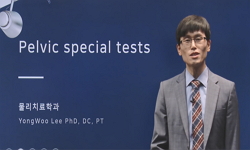Background: Commuting is essential for work and daily life activities; however, prolonged travel times can negatively affect health. This study aimed to examine the relationship between commuting time and musculoskeletal pain (back, upper extremity, a...
http://chineseinput.net/에서 pinyin(병음)방식으로 중국어를 변환할 수 있습니다.
변환된 중국어를 복사하여 사용하시면 됩니다.
- 中文 을 입력하시려면 zhongwen을 입력하시고 space를누르시면됩니다.
- 北京 을 입력하시려면 beijing을 입력하시고 space를 누르시면 됩니다.
부가정보
다국어 초록 (Multilingual Abstract)
Methods: This study analyzed employees with ≥35 weekly working hours using data from the Sixth Korean Working Conditions Survey conducted in Korea. Variables such as commuting time, weekly working hours, and shift work were assessed using the survey questions. Musculoskeletal pain was determined based on self-reported health issues in the previous year. Insomnia symptoms were assessed by the Minimal Insomnia Symptom Scale (MISS). The covariates included demographics, employment status, and job stress. The association between commuting time and musculoskeletal pain and insomnia symptoms stratified by weekly working hours or shift work was analyzed using survey-weighted logistic regression analysis.
Results: We found a significant association between longer commuting times and increased prevalence of musculoskeletal pain and insomnia symptoms. When commuting time was ≤60, 61–120, >120 min, the odds ratios (95% confidence intervals) were 1.00, 1.32 (1.16–1.51), and 2.25 (1.68–3.02) for back pain; 1.00, 1.27 (1.12–1.44), and 2.09 (1.56–2.79) for upper extremity pain; and 1.00, 1.21 (1.03–1.42), and 1.35 (1.01–1.80) for lower extremity pain, respectively. With daily commuting times ≤60, 61–120, and >120 minutes, the odds ratios for insomnia symptoms were 1.00, 1.41 (1.16–1.71), and 2.19 (1.57–3.04), respectively. Furthermore, except for upper-extremity pain, this trend was amplified when participants were concurrently exposed to long working hours or shift work.
Conclusion: Long commuting time is an independent risk factor for musculoskeletal pain and insomnia symptoms, and its effects are aggravated when combined with long working hours or shift work. This study underscores the detrimental impact of prolonged commuting on workers’ health, highlighting the need for interventions to mitigate its adverse effects, particularly in populations with extended working hours or shift work. keywords: Cross-Sectional Study, Commuting, Working hours, Shift work, Musculoskeletal pain, Sleep disturbance
Background: Commuting is essential for work and daily life activities; however, prolonged travel times can negatively affect health. This study aimed to examine the relationship between commuting time and musculoskeletal pain (back, upper extremity, and lower extremity pain) and insomnia symptoms, in the context of weekly working hours and shift work.
Methods: This study analyzed employees with ≥35 weekly working hours using data from the Sixth Korean Working Conditions Survey conducted in Korea. Variables such as commuting time, weekly working hours, and shift work were assessed using the survey questions. Musculoskeletal pain was determined based on self-reported health issues in the previous year. Insomnia symptoms were assessed by the Minimal Insomnia Symptom Scale (MISS). The covariates included demographics, employment status, and job stress. The association between commuting time and musculoskeletal pain and insomnia symptoms stratified by weekly working hours or shift work was analyzed using survey-weighted logistic regression analysis.
Results: We found a significant association between longer commuting times and increased prevalence of musculoskeletal pain and insomnia symptoms. When commuting time was ≤60, 61–120, >120 min, the odds ratios (95% confidence intervals) were 1.00, 1.32 (1.16–1.51), and 2.25 (1.68–3.02) for back pain; 1.00, 1.27 (1.12–1.44), and 2.09 (1.56–2.79) for upper extremity pain; and 1.00, 1.21 (1.03–1.42), and 1.35 (1.01–1.80) for lower extremity pain, respectively. With daily commuting times ≤60, 61–120, and >120 minutes, the odds ratios for insomnia symptoms were 1.00, 1.41 (1.16–1.71), and 2.19 (1.57–3.04), respectively. Furthermore, except for upper-extremity pain, this trend was amplified when participants were concurrently exposed to long working hours or shift work.
Conclusion: Long commuting time is an independent risk factor for musculoskeletal pain and insomnia symptoms, and its effects are aggravated when combined with long working hours or shift work. This study underscores the detrimental impact of prolonged commuting on workers’ health, highlighting the need for interventions to mitigate its adverse effects, particularly in populations with extended working hours or shift work. keywords: Cross-Sectional Study, Commuting, Working hours, Shift work, Musculoskeletal pain, Sleep disturbance
목차 (Table of Contents)
- Ⅰ. Introduction 1
- Ⅱ. Methods 5
- 1. Study population 5
- 2. Commuting time, weekly working hours, and shift work 6
- 3. Musculoskeletal pain 7
- Ⅰ. Introduction 1
- Ⅱ. Methods 5
- 1. Study population 5
- 2. Commuting time, weekly working hours, and shift work 6
- 3. Musculoskeletal pain 7
- 4. Insomnia symptoms 7
- 5. Covariates 8
- 6. Statistical analysis 10
- Ⅲ. Results 11
- Ⅳ. Discussion 16
- Ⅴ. Conclusions 22
- References 43
- Acknowledgments 54
- Abstract 56








